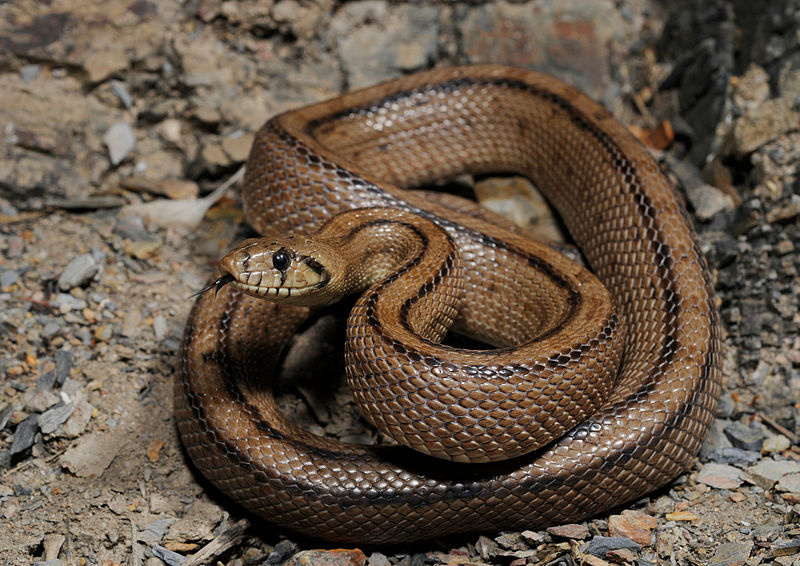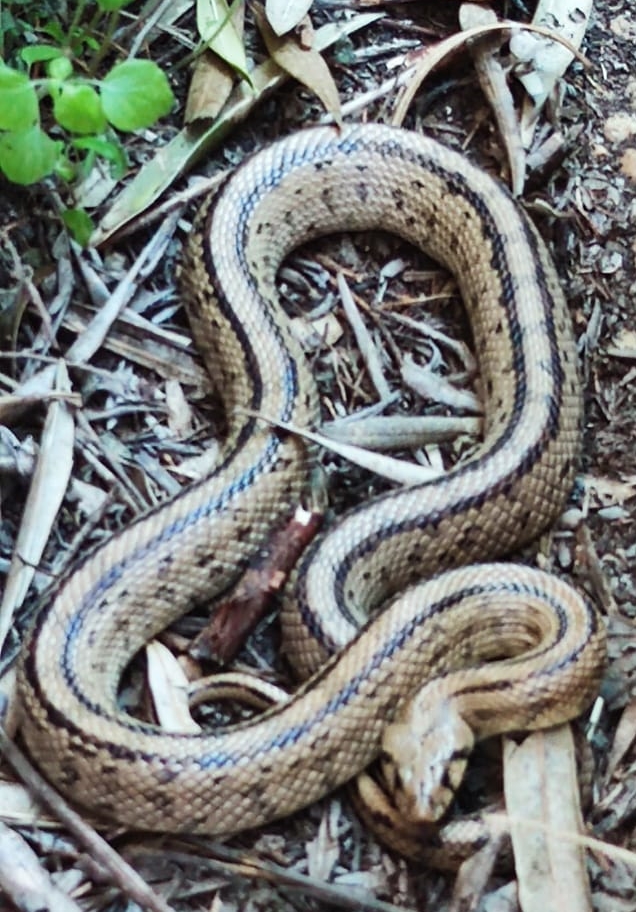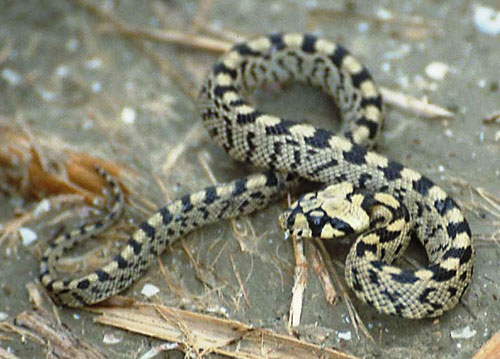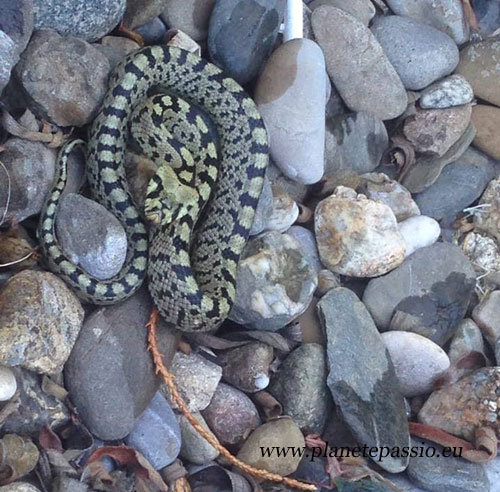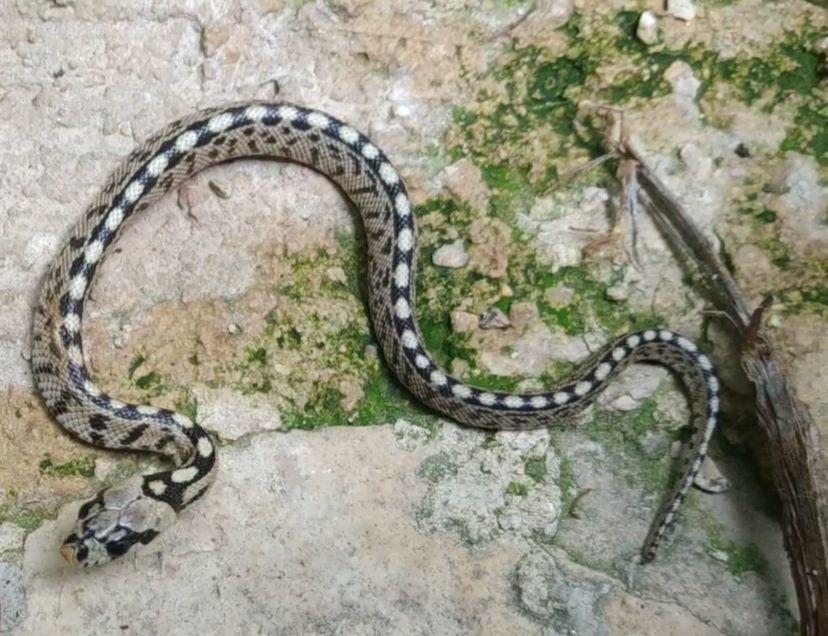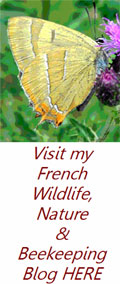Ladder snake
Rhinechis, (Elaphe), scalaris
Couleuvre à échalons
Ladder snakes are medium large snakes
In France they are only to be found in the south
Although mainly diurnal
they will also hunt at dusk and during the night in hot conditions, the young are nocturnal. Being discrete and fearful they flee from any disturbance taking cover in a hole in the ground or hollow tree, however they become extremely irritated when cornered, hissing furiously and sometimes "biting" if handled. Very susceptible to cold – hibernation takes place from October until April.
Populations are thought to be stable
Coupling takes place in April / May or a little later at higher altitudes or if weather conditions are poor. About 12 eggs are deposited under an old tree stump or a layer of pine needles in July, hatching can take anything from 6 to 12 weeks dependent upon the temperature.
